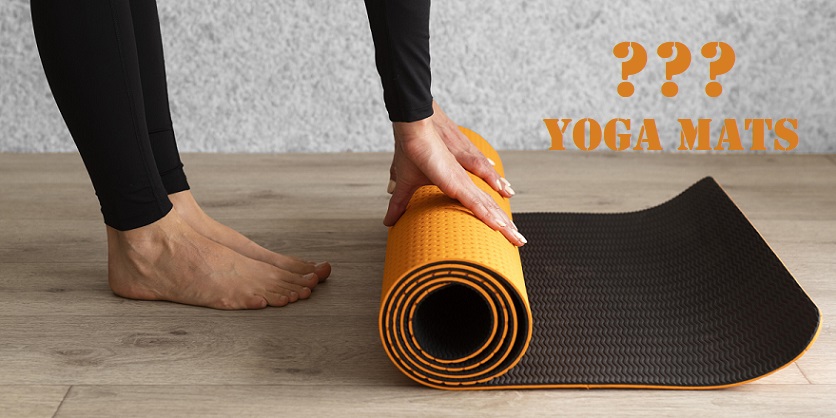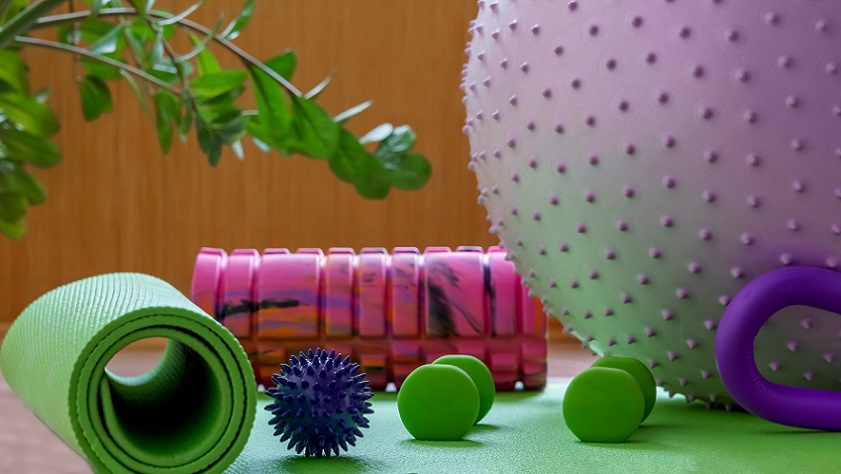×
Don't miss out!
Sign up for 10% off your first order
and exclusive product previews!
In the early days of yoga, practitioners used minimal equipment, often relying on natural elements like grass or, if needed, basic materials like animal skins or cloth for cushioning.
As yoga continued to develop over the years, particularly in the 1930s, cotton rugs made from these fabrics became prevalent. With the emergence of more intricate asanas and increased movement in the practice, there arose a need for a stable and comfortable surface.
The widespread adoption of yoga in the West brought about a demand for more advanced yoga mats. In the 1960s, the first modern yoga mats were introduced, using carpet underlay. However, these early sticky mats had a significant drawback – durability. The foam material tended to wear down quickly with moderate to heavy use.
It wasn’t until the 1990s that Sara Chambers founded Hugger Mugger, introducing mats that were notably sturdier and offered superior grip and stability. These mats were a significant improvement, but they had a downside – they were made from PVC (Polyvinyl Chloride), a material known for its environmental unfriendliness. Despite this environmental concern, they remained highly durable and forgiving for yoga practitioners.
Related Article: Dive Deep into Hugger Mugger Yoga Supplies: The Ideal Choice?
Fast forwarding again in time, as we sit here writing this post in 2022, finding a mat tailored to your needs is easier then ever. From a vast selection of colors, to a wide assortment of materials and thickness’s, the options are almost…..Endless!
Related Article: A How to, and Benefits Guide to Yoga Blankets!
So What’s The Problem?
The problem now is that beginners can often experience to much of a selection. In fact, yogi’s may find themselves totally overwhelmed by the process. This guide will serve as the perfect tool to introduce you to yoga mats and the various features you need to know about, to make a mindful selection.
Related Article: How To Take Care Of Your Yoga Mat?
I. Thickness Is Important!
Too Thick /Too Thin!
The thickness of a yoga mat is one of the essential features you need to consider when purchasing this essential yoga tool.

The thickness of your yoga mat becomes especially crucial when you’re older or in need of extra support for sensitive joints like arthritic knees and elbows. However, it’s essential to strike the right balance. Going for a mat that’s excessively thick might seem like a good idea, but it can lead to instability and difficulties while attempting certain poses.
Another consideration with thicker mats is their weight. Typically, thicker equates to heavier – sometimes even up to 7 pounds. This could be a concern if you plan to transport your mat regularly.
Ultimately, the choice between thick and thin mats largely boils down to personal experience and preference. In today’s market, mats of various thicknesses can accommodate different styles of yoga. The key is to discover the sweet spot that provides both comfort and stability for you as an individual. A good starting point for many is an 1/8″ mat, which is a standard thickness and strikes the right balance, ensuring it doesn’t bunch up during your asanas.
The Fundamentals
I. Thin Mats:
Pros: Ideal for travel. Enhanced stability and balance. Suitable for use on carpets.
Cons: Limited cushioning.
II. Thick Mats:
Pros: Excellent for therapeutic sessions. Well-suited for hardwood floors. Perfect for extended holds, such as restorative poses. Provides added comfort for joints.
Cons: Heavier and less portable. Reduced stability and a tendency to bunch up.
II. Material Matters
When choosing your yoga mat, the material it’s made from plays a significant role. Why? Well, the material can influence how the mat responds to factors like moisture (such as sweat), its eco-friendliness, stickiness, its ability to absorb the impact of different postures and positions, and even its odor.
The last thing you want during an intense yoga session is to constantly worry about slipping or struggling to keep your mat stable on the ground.
Yoga mats are available in various materials, including cork, PVC (vinyl), natural or recycled rubber (though be cautious of latex allergies), and cotton. As you gain more experience, you may develop a specific preference for a particular material.
PVC (Vinyl):
For beginners, vinyl, also known as PVC, is the most budget-friendly option, offering excellent traction for various yoga styles. PVC mats are known for their durability.
However, there are two notable downsides. First, they are not environmentally friendly. Second, they don’t absorb moisture well. If you tend to sweat profusely during your practice, you’ll need to be mindful of this and may find yourself stopping to dry off your mat frequently. PVC mats are also latex-free.
Related Article: Popular Yoga Clothing: Types Of Yoga Pants
III. Price Range:
When it comes to yoga mats, prices can vary significantly, ranging from relatively expensive to quite affordable. Several factors contribute to the overall price, and each factor influences the cost differently.
For beginners exploring the world of yoga mats, starting with an affordable option is a practical choice. This allows you to gauge your interest in practicing yoga and assess any evolving preferences before investing in a higher-priced mat. As you gain more experience and insight into your yoga practice, you can consider upgrading to a mat that aligns with your specific needs and preferences.
When it comes to pricing, there’s not much more to elaborate on. As you explore various retailers and manufacturers, whether it’s through Amazon or elsewhere, you’ll quickly notice the significant disparities in prices. In most cases, PVC mats tend to be the most budget-friendly option available.
Related Article: Yoga Techniques: Stretching With Yoga Blocks
IV. Texture & Grip Can Be Tricky
The final consideration, which we’ve briefly discussed earlier, is the texture and grip offered by the mat. This factor holds significance because you wouldn’t want to risk losing your footing while attempting advanced poses or any asana during your practice.
As mentioned earlier, this aspect of selecting a mat is highly individualized due to the vast array of mats available. A prudent approach is often to begin with a cost-effective, somewhat standardized mat and gradually tailor your choice as you gain experience and discern your specific needs and preferences. Starting simple allows you to get a feel for what works best for you in terms of texture and grip.

An ideal texture on a yoga mat strikes the right balance between providing traction for your body, offering grip against the floor, and having some resistance to moisture. However, certain yoga styles, such as hot yoga or intense flow yoga, can induce significant sweating. In these cases, using a towel topper can be a practical solution to absorb sweat, reducing the risk of slipping. Additionally, a towel topper simplifies the cleaning process post-practice.
Some mats are designed with specific textures to enhance grip. These textures can serve a dual purpose, making the mat either more or less sticky depending on your preference. Furthermore, these textures may contribute to physical comfort levels, and their effectiveness can vary from person to person.
As a general guideline, if you prefer to avoid PVC, consider opting for natural rubber mats or mats made of cotton with a raised pattern, especially on those days when you anticipate excessive sweating during your practice. These materials can provide the grip and moisture resistance you need while aligning with eco-friendly choices.
Choosing the “perfect” yoga mat tailored to your individual needs involves various considerations, and sometimes, it’s a process of trial and error. If you’re new to yoga, it’s prudent not to rush into purchasing a $200.00 yoga mat, no matter how appealing it may seem. The mat you select should align with your experience level and the style of yoga you practice.
In many ways, it’s akin to the saying “aim small, miss small.” If you start with a more budget-friendly mat and find it’s not the ideal fit, you have the flexibility to make adjustments with minimal financial impact. However, investing in a $200.00 mat that doesn’t suit your needs can result in a substantial expenditure and potential waste of money if it goes unused.
For those considering their first yoga mat, two valuable resources can aid in your decision-making process. Firstly, when purchasing a yoga mat online, be sure to read all the reviews to gain insights from other users. Secondly, don’t hesitate to seek guidance from your yoga instructor. They often have extensive knowledge of mats and can provide recommendations based on your specific preferences and needs.
We trust that this guide has offered valuable assistance in your journey to select the ideal yoga mat with greater care. Have a wonderful day, and may your yoga practice be enriched by the perfect mat for you!
References:
Get updates, top yoga recommendations, and an exclusive preview of our upcoming products!